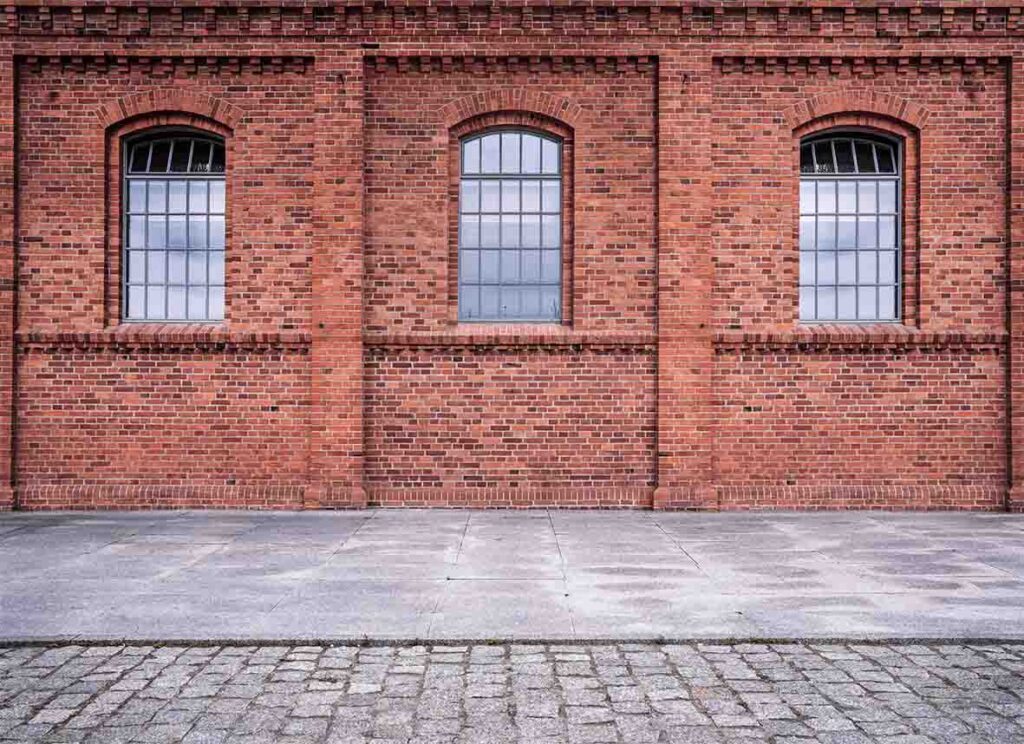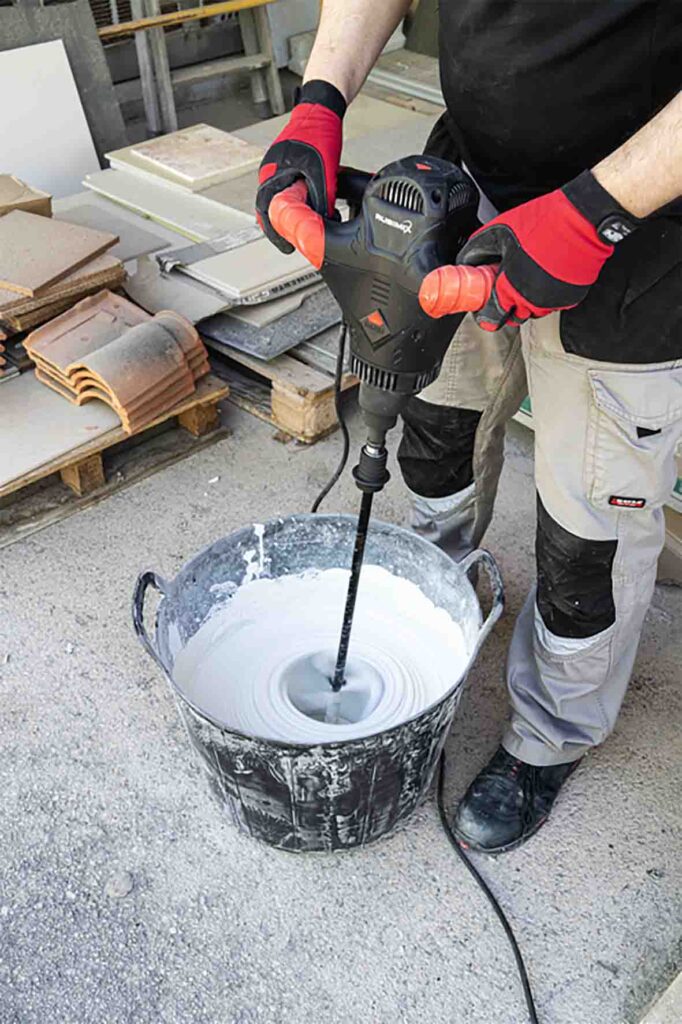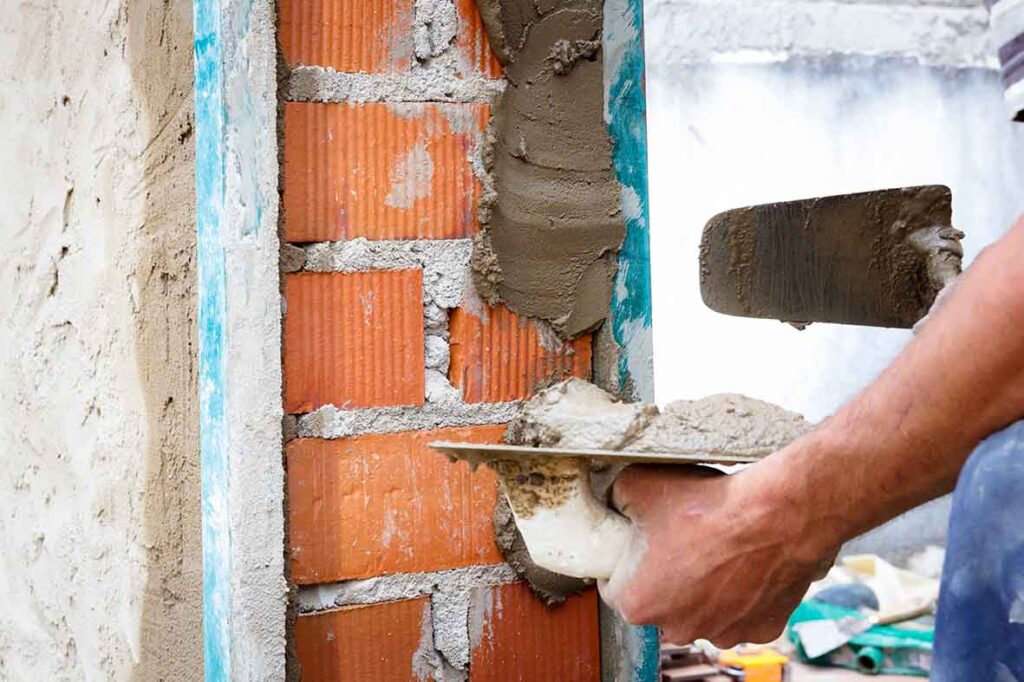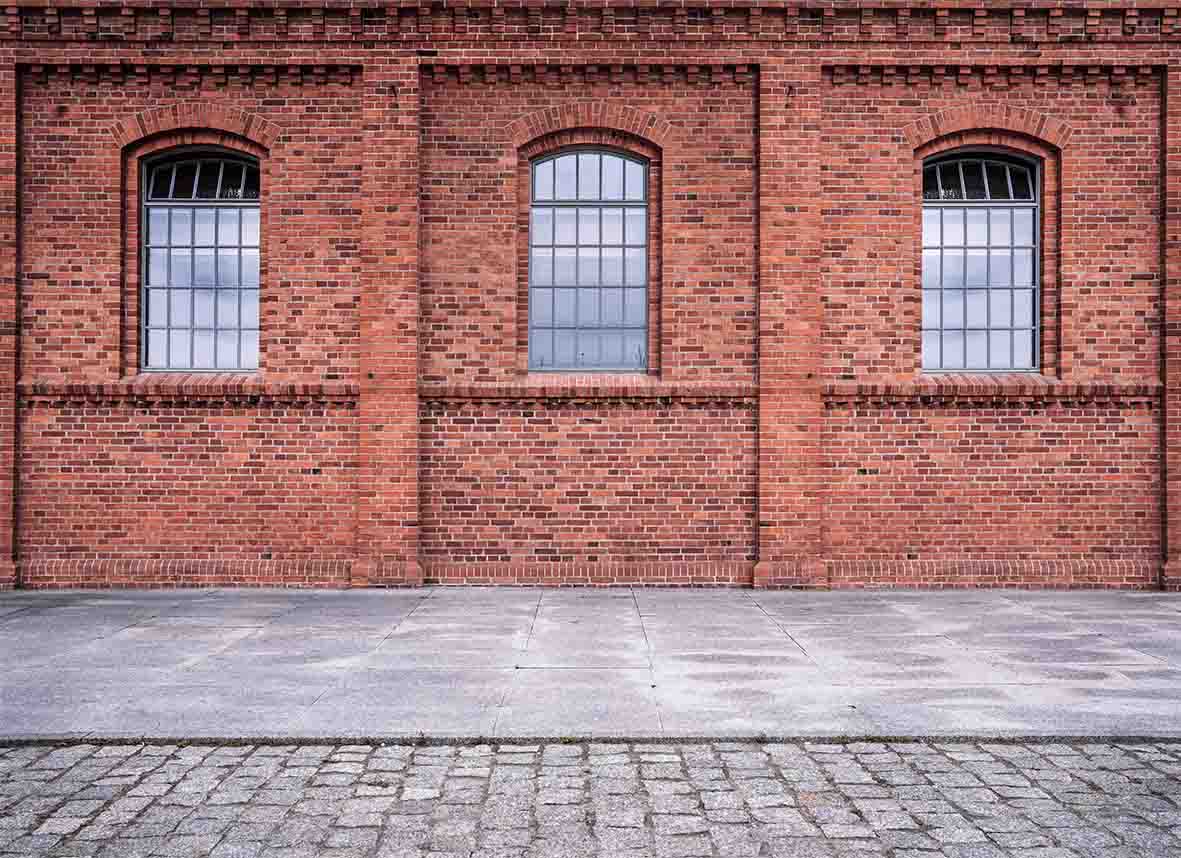A brick facade is an iconic architectural feature in the UK used to add charm, durability, and insulation to buildings. Whether you’re working on a new build, a renovation, or simply upgrading the look of your home, installing a brick facade can significantly enhance both the aesthetic appeal and the structural integrity of a property. In this guide, we will walk you through what a brick facade is, and how they are installed. We will also discuss the essential tools you’ll need so you know how to install them, and how to tile over them.


What is a Brick Façade?
A brick facade refers to a layer of brickwork that is applied to the outer surface of a building. It acts as a decorative and protective exterior. Builders typically install them over a structural wall made from materials such as wood, concrete, or steel. A brick facade primarily provides the appearance and benefits of traditional brick construction without requiring the entire structure to consist of brick.
In the UK, where brick buildings are highly prized for their historical and aesthetic value, brick facades offer homeowners and developers the opportunity to recreate this classic look on modern buildings. Additionally, a brick facade can offer added protection from weather elements, provide insulation, and increase the property’s value.
Why are Brick Facades Popular in the UK?
Brick facades are ubiquitous in the UK due to their versatility, durability, and timeless appeal. Brick has been a fundamental building material in British architecture for centuries, with a deep connection to the country’s heritage. Buildings made with brick or brick veneers can be seen all over the UK. From London’s historic townhouses to the newer developments in the countryside.
There are several key reasons why brick facades continue to be a popular choice in the UK:
- Aesthetic Appeal: Brick offers a rustic and traditional look that complements both historic and contemporary homes. Brick facades come in various styles, textures, and colours, allowing homeowners to choose a finish that matches their desired aesthetic.
- Durability: Brick facades are resistant to fire, termites, and extreme weather conditions, making them a highly durable choice. The outer layer protects the underlying structure from moisture, wind, and even temperature fluctuations, prolonging the lifespan of the building.
- Low Maintenance: Once installed, a brick facade requires minimal upkeep. It doesn’t rot, fade, or degrade as quickly as other exterior materials. This means homeowners can enjoy the look of a brick facade for decades with little maintenance.
- Sustainability: Brick is a natural material made from clay and shale, which are abundant and environmentally friendly. Moreover, the long-life cycle of brick façades makes them a sustainable choice.
- Energy Efficiency: A well-installed brick façade helps to insulate buildings, keeping them warm in winter and cool in summer. This leads to better energy efficiency, which can result in reduced heating and cooling costs.

Essential Tools for Brick Facade Installation
To ensure a successful brick facade installation, it’s essential to have the right tools. Below, we outline some of the must-have products for the job. We focus on quality tools, including the RUBI Brick Trowels and the RUBIMIX 9 Powermax mixer.
1. RUBI Brick Trowels
The RUBI Brick Trowels are indispensable for anyone working with brick facades. A trowel is used for applying and spreading mortar between bricks, ensuring a strong and stable bond. The RUBI Brick Trowels are known for their ergonomic design and superior build quality. They allow for precise mortar application with minimal effort.
The handle of a RUBI trowel is crafted to offer comfort during long periods of use, while its durable steel blade ensures even and smooth mortar distribution. Whether you’re an experienced mason or a DIY enthusiast, having a high-quality brick trowel ensures the best results.
2. RUBIMIX 9 Powermax Mixer

The RUBIMIX 9 Power Max mixer is another crucial tool when installing a brick facade. Mixing mortar or adhesive by hand can be laborious and inconsistent. However, with the RUBIMIX 9 Powermax, you can achieve the perfect mix quickly and efficiently.
The manufacturer designed this powerful mixer for professionals and heavy-duty use, ensuring it provides consistent results every time. Its ergonomic handle and variable speed control allow for easy operation. Additionally, the high-performance motor ensures that your adhesive is mixed evenly and to the correct consistency.
The RUBIMIX 9 Powermax is especially beneficial when working with large volumes of mortar. By using this mixer, you can ensure that your mortar maintains the right texture throughout the job, reducing the risk of weak bonds between the bricks.
Step-by-Step Guide to Brick Façade Installation
Step 1: Prepare the Surface
Before you begin, ensure that the wall surface is clean, dry, and structurally sound. You may need to repair any damage or cracks in the underlying wall, as the facade needs a stable surface for proper adherence.
Step 2: Apply the Adhesive or Mortar
Using your RUBIMIX 9 Powermax mixer, prepare the mortar or adhesive according to the manufacturer’s instructions. This step is crucial, as the right consistency ensures a solid bond between the bricks and the underlying wall.
Once mixed, use the Brick Trowel to spread the mortar evenly onto the back of the bricks and the wall, ensuring an even distribution of material.
Step 3: Lay the First Row of Bricks
Start laying your bricks from the bottom of the wall, working your way up. Align each brick carefully, using a level to ensure straight lines. The first row sets the foundation for the rest of the facade, so take extra care in this stage.
Leave appropriate gaps between the bricks for mortar joints, typically around 10mm. The RUBI Brick Trowel helps you manage these joints efficiently, applying just the right amount of mortar for a clean and professional finish.

Step 4: Continue Brick Laying
Continue to build your brick facade by laying subsequent rows of bricks. Be sure to stagger the joints in a brick pattern for added strength and visual appeal.
As you progress, use the RUBI Brick Trowel to fill the joints between the bricks with mortar, smoothing and compressing them for a solid finish.
Step 5: Clean and Finish
After you’ve completed the brick laying, allow the mortar to set. Once dry, clean any excess mortar or debris from the surface of the bricks using a soft brush. This will help to reveal the final, polished look of the brick facade.
Conclusion
Installing a brick facade is a fantastic way to add both aesthetic and functional value to your property. By using high-quality tools like the RUBI Brick Trowels and the RUBIMIX 9 Powermax mixer, you can achieve a professional finish that will stand the test of time. With proper installation, a brick facade will not only protect your home from the elements but also enhance its beauty for many years to come. Whether you’re looking to replicate the classic look of traditional British architecture or simply improve your home’s curb appeal, a brick facade is an investment worth making. Follow this guide, equip yourself with the right tools, and you’ll be well on your way to creating a stunning and long-lasting exterior for your home.



Post a comment